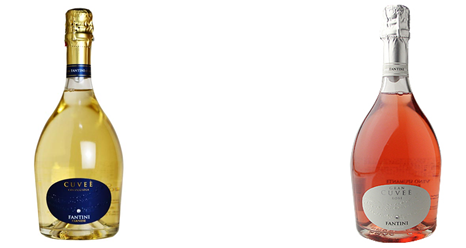The liability of the Internet Service Providers (ISPs) is still an unsettled area of the case law both at European and national level, with a lot of recent cases that deal with ISPs and the unauthorized online distribution of audio-visual contents (see CJEU case C-610/15 and Court of Appeal of Rome – case Break Media – and Court of Turin – case Delta TV). Anyway, there is also another side of the case law on the liability of ISPs that deals with the selling of goods and services which infringe IP rights via e-marketplace (the leading case of the CJEU is case C-324/09 L’Oréal Vs eBay). In a recent decision, the Court of Appeal of Milan (here) shed light on the joint liability of the ISP and the professional users of its services.
The case at stake is based on the alleged infringement of the trademarks of some major manufacturers of domestic appliance (Electrolux, Candy, Ariston, Bosch, Hoover, Smeg and others, collectively the “Claimants”) by the company ABB, with others (the “Defendant”) via some adverts on the Italianonline’s websites White Pages and Yellow Pages. ABB offered maintenance and support services for domestic appliances – on the White Pages and Yellow Pages edited by Italiaonline – using the ABB’s registered trademarks “Boschexpert”, “Candyexpert”, Aristonexpert” and so on. The Court of Milan in first instance held that ABB’s trademarks were void and found ABB liable of trademark infringement and unfair competition against the manufacturers, since the consumers were misled by the use of ABB’s trademarks on the real origin of the support and maintenance services. Italiaonline has been found jointly liable of such IP violations and both ABB and Italiaonline have been ordered to jointly pay damages to the Claimants. Italiaonline reached a settlement with the Claimants while ABB appealed the Court’s ruling of first instance.
The Court of Appeal of Milan has confirmed the ruling of the Court of first instance in terms of determination of the illicit conduct and quantification of the damages but has clarified the position of Italiaonline as ISP whose electronic means have been use for committing an IPR infringement. Indeed, in the first instance Italiaonline has been fully indemnified by ABB since ABB had a preeminent role in the illicit conduct. This seemed to ABB inconsistent, since Italiaonline has been declared jointly liable for the same illicit conduct. According to ABB, Italiaonline as a technical ISP is the sole responsible of the search engine for the adverts on the websites White Pages and Yellow Pages, which results are misleading and determining confusion to the consumers.
According to the Court of Appeal, Italianonline’s websites can be considered Information Society Services pursuant to E-commerce Directive (despite the fact the White Pages and the Yellow Pages are published both in paper and in electronic form). This leads to the fact that Italianonline can be considered a host provider pursuant to Article 14 of the E-Commerce Directive for the websites White Pages and Yellow Pages, since it technically hosts on such websites the adverts of its professional clients, such as ABB. More in detail, in this case the ISP cannot invoke the safe harbour provision pursuant to Article 14 of the E-Commerce Directive due to its active role for the third-party adverts in return for payment, where Italiaonline does not merely technically process third party adverts but also edits promotional messages coupled with the third-party adverts and identifies the key-words for its search engine. While playing this active role – according to the Court of Appeals – the ISP is responsible for lack of control and for not having expeditiously removed the infringing adverts after the notices of the Claimants (the earliest ones dated 2003).
With regards to the relation between the infringing activity of ABB and the cooperation of Italialonline, the Court of Appeal found that, even if jointly liable, ABB had effectively a preeminent role in terms of relevance and wilfulness of the conduct and that the joint liability must be evaluated according to Article 2055 of the Italian Civil Code, pursuant to which, where two or more parties are held jointly liable, the party paying the damages can recover from the other parties the pro quota of damages attributable to the level of wilfulness and to the consequences of the conduct of the other parties (so called, right of recourse). The request raised by Italianoneline for indemnification of the damages determined by ABB is considered by the Court of Appeal as a right of recourse aimed at clarifying the pro quota of responsibility of Italiaonline. The right of recourse is applicable pro quota also to ABB as party paying the damages. In light of this interpretation, the Court of Appeal awarded also to ABB a recourse against Italiaonline equal to the 30% of damages to be paid to the Claimants.
This precedent seems of interest because the Court of Appeal of Milan, while making clear application of the principles set forth by the Court of Justice in the leading European case law L’Oréal Vs eBay (an e-marketplace cannot invoke the safe harbour provisions under E-Commerce Directive if it plays an active role by optimizing and promoting the selling of infringing products or services), has even moved forward by clarifying a possible criterion for the attribution of responsibility between professional users and e-marketplaces. It would be of interest verifying whether the same approach could be adopted by other foreign jurisdictions, since the regime of joint responsibility under tort law seems to be matter of domestic jurisdiction.
Gianluca Campus
Court of Appeal of Milan, case No. 1076/2014, 14 December 2016, Italiaonline Spa Vs ABB Srl and Others (President of the Court: Hon. A.M. Vigorelli; Judge-Rapporteur Hon. F. Fiecconi)


